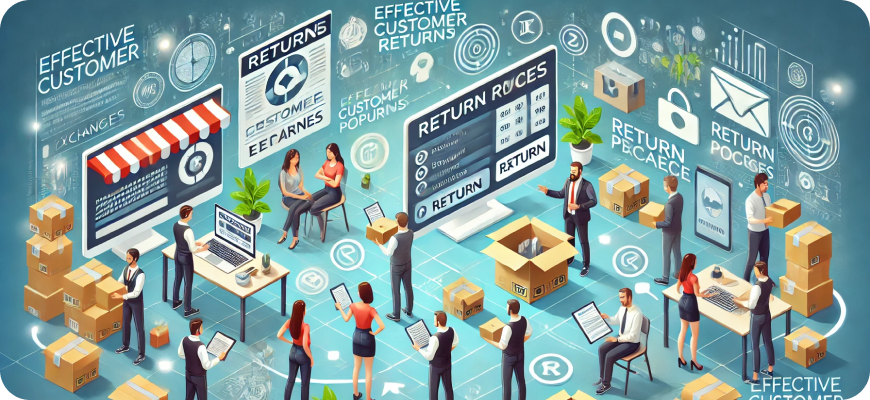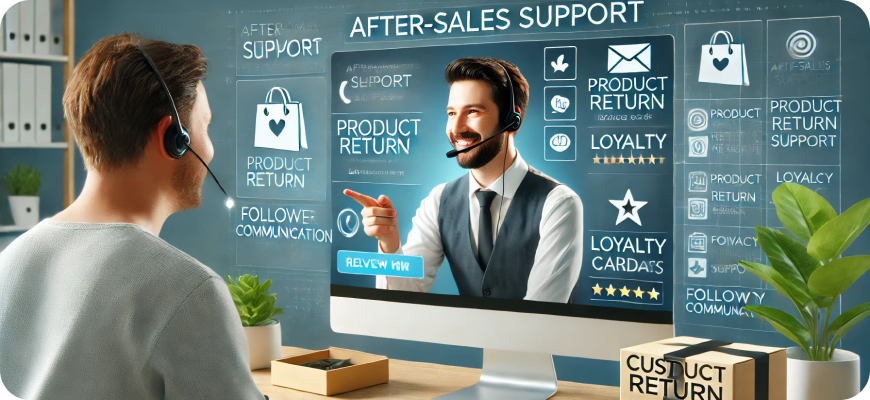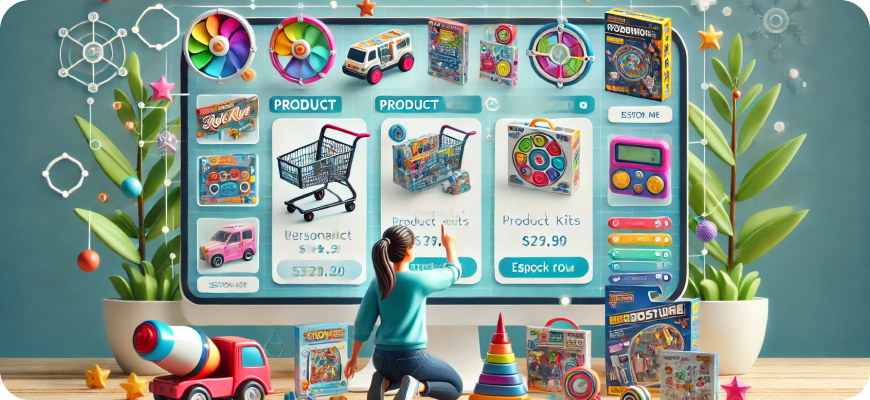Developing Effective After-Sales Strategies for Your E-commerce Business
In the competitive world of e-commerce, acquiring a customer is only half the battle won. Ensuring customer satisfaction and retention through effective after-sales strategies is crucial to building brand loyalty, increasing lifetime value, and fostering a strong customer base. A seamless after-sales experience not only creates lasting impressions but also differentiates your business from countless competitors.
Here’s a comprehensive guide to developing effective after-sales strategies to elevate your e-commerce business.

1. The Importance of After-Sales Strategies
Before diving into specific strategies, it’s vital to understand why after-sales service matters:
- Customer Retention and Loyalty: An excellent after-sales experience turns one-time buyers into loyal customers who are more likely to return for future purchases.
- Word-of-Mouth Marketing: Satisfied customers often become brand advocates, spreading positive word-of-mouth that drives new customers to your business.
- Revenue Growth: Repeat customers contribute significantly to overall revenue, often spending more than new customers.
- Reduced Customer Churn: Proactive engagement and support reduce the likelihood of customers abandoning your brand for competitors.
2. Building a Solid Post-Purchase Customer Experience
Delivering an excellent post-purchase experience builds a strong foundation for all after-sales efforts:
- Easy Order Tracking and Updates
- Real-Time Order Tracking: Offer customers real-time order tracking through your website or app. Automated notifications at each step of the shipping process, such as dispatch, transit, and delivery, keep customers informed and engaged.
- Proactive Communication: Proactively inform customers about potential delays and offer solutions or compensation if appropriate. Transparency builds trust.
- Smooth Return and Refund Policies
- Flexible Return Policies: Implement a customer-friendly return and refund policy with clear terms. Easy returns encourage hesitant buyers and improve post-purchase satisfaction.
- Automated Returns Management: Invest in tools that streamline returns, from generating return labels to processing refunds or exchanges quickly.
- Welcome and Thank You Notes
- Post-Purchase Thank You Emails: Send a personalized thank you email after a purchase, expressing appreciation and reinforcing a positive buying experience.
- Welcome Packages: For high-value or new customers, consider sending physical welcome packages, including product samples, thank you cards, or promotional codes for future purchases.
3. Providing Stellar Customer Support
Responsive and efficient customer support is a hallmark of exceptional after-sales service:
- AI-Powered Chatbots and Live Chat
- 24/7 Availability: Deploy AI-powered chatbots that can handle common queries, track orders, initiate returns, and escalate issues to human agents as needed.
- Human Touch When Necessary: For more complex issues, ensure that human agents are available to provide thoughtful and empathetic support.
- Multichannel Support
- Omnichannel Presence: Be available on various platforms, such as email, social media, phone support, and live chat. Customers prefer brands they can reach easily through their preferred channels.
- Centralized Support System: Use customer relationship management (CRM) tools to centralize customer data and interactions, enabling support agents to provide faster, personalized responses.
- Proactive Customer Support
- Post-Sale Check-Ins: Follow up with customers post-purchase to ensure satisfaction. A simple check-in call or email can uncover potential issues and demonstrate your commitment to their happiness.
- Anticipate Issues: Use data analytics to predict common issues and reach out proactively to affected customers with solutions or helpful guides.
4. Building Long-Term Customer Relationships
Turning a purchase into a lasting relationship is key to boosting customer lifetime value:
- Loyalty and Rewards Programs
- Points-Based Rewards: Encourage repeat purchases by offering points for every dollar spent, redeemable for discounts, free products, or exclusive perks.
- Tiered Loyalty Levels: Offer additional benefits, such as early access to sales or personalized gifts, to high-value customers based on their spending or engagement levels.
- Subscription Services and Memberships
- Product Subscriptions: Offer subscription models for frequently purchased items, such as consumables or fashion essentials, making it convenient for customers to re-purchase.
- Exclusive Memberships: Create exclusive clubs with perks such as free shipping, members-only products, or early access to new releases, rewarding your most dedicated customers.
- Personalized Follow-Up Communications
- Tailored Recommendations: Use AI to analyze past purchases and send personalized product recommendations, keeping customers engaged.
- Seasonal and Special Occasion Offers: Send thoughtful promotions or messages for birthdays, anniversaries, or other milestones, showing customers you care.
5. Leveraging Technology to Enhance After-Sales Service
The right technology can transform your after-sales efforts, creating a more seamless and efficient customer experience:
- CRM Systems
- Customer Data Tracking: Use CRM software to track interactions, preferences, purchase history, and feedback, enabling a personalized experience.
- Automated Follow-Ups: Automate follow-up emails or texts based on triggers, such as recent purchases, customer feedback, or upcoming product launches.
- AI and Machine Learning
- Predictive Analysis: Use AI-powered analytics to anticipate customer needs, identify churn risks, and offer proactive solutions.
- Voice and Visual Assistance: AI-powered voice and visual assistance tools can help customers troubleshoot products or answer questions, enhancing self-service capabilities.
- Post-Purchase Analytics
- Customer Feedback Analysis: Collect feedback through surveys, reviews, or NPS (Net Promoter Score) surveys and analyze trends using AI tools.
- Cohort Analysis: Use analytics to segment customers into cohorts based on their behavior and preferences, allowing for targeted campaigns.
6. Encouraging User-Generated Content (UGC) and Reviews
Authentic reviews and user-generated content (UGC) not only serve as powerful social proof but also deepen customer engagement:
- Requesting Reviews and Feedback
- Automated Requests: Automate requests for product reviews after a customer has received their order. Consider offering incentives, such as discounts, to encourage participation.
- Guided Review Forms: Provide easy-to-complete review forms with questions tailored to specific product categories.
- Sharing Customer Stories
- Highlighting UGC: Share customer photos, videos, or testimonials on your website, social media, and marketing campaigns to show appreciation and foster a sense of community.
- Engagement Contests: Run social media contests that encourage customers to share photos or stories about their experiences with your products, rewarding participants with prizes.
7. Offering Product Education and Training
Educating customers about your products adds value, boosts customer confidence, and reduces support needs:
- Product Tutorials and Guides
- How-To Videos: Create engaging how-to videos, tutorials, or webinars demonstrating product use, best practices, and tips.
- Knowledge Base and FAQs: Maintain a comprehensive knowledge base with detailed FAQs, troubleshooting guides, and self-service articles.
- Personalized Onboarding
- Custom Onboarding for Complex Products: For complex products or services, provide personalized onboarding sessions to guide customers through setup and usage.
- Check-In Campaigns: Send automated emails with product tips, usage best practices, and maintenance reminders to increase product satisfaction.
8. Effective Feedback Loops
A strong feedback loop helps you continuously improve products, services, and the overall customer experience:
- Customer Satisfaction Surveys
- Timing is Key: Send surveys at key points in the customer journey, such as after a purchase, return, or support interaction.
- Follow-Up on Feedback: Actively respond to customer feedback, addressing concerns and making changes when necessary.
- Community Forums and Groups
- Customer Communities: Create dedicated forums, social media groups, or communities where customers can discuss products, ask questions, and provide feedback.
- Moderated Discussions: Actively engage in discussions and use insights to improve product offerings and customer service.
9. Building Brand Loyalty Through Ethical Practices
E-commerce customers today appreciate brands that operate with integrity and demonstrate social responsibility:
- Transparency and Honesty
- Clear Product Descriptions: Ensure all product descriptions are accurate, detailed, and reflect real customer experiences.
- Proactive Communication: Own up to mistakes and work to resolve issues with honesty and sincerity, turning potentially negative experiences into positive ones.
- Social Responsibility Initiatives
- Sustainability Practices: Offer eco-friendly products, sustainable packaging, or carbon offset programs. Highlight these initiatives in your after-sales communications.
- Charity Donations: Allow customers to contribute to charitable causes through their purchases, enhancing their connection to your brand.
10. Continuous Optimization of After-Sales Strategies
The success of your after-sales strategy depends on continuous refinement and improvement:
- Regular Performance Reviews
- KPIs and Metrics: Track key performance indicators (KPIs), such as customer retention rate, repeat purchase rate, customer satisfaction score, and net promoter score (NPS).
- Iterative Improvements: Use data-driven insights to refine strategies, adjust policies, and introduce new initiatives based on customer needs.
- Benchmarking Against Competitors
- Competitive Analysis: Study competitor strategies and benchmarks to identify potential areas for improvement and innovation.
- Adapting to Trends: Stay ahead of emerging after-sales trends and leverage new technologies to maintain a competitive edge.

Conclusion
Developing effective after-sales strategies in e-commerce goes beyond closing a sale; it’s about nurturing long-term relationships, creating loyal advocates, and maximizing customer lifetime value. By focusing on personalization, stellar support, loyalty programs, and technology-driven solutions, you can create a memorable and satisfying after-sales journey that leaves customers delighted and eager to return.
The e-commerce industry is constantly evolving, and adapting your after-sales strategies is key to staying ahead. Embrace these practices, listen to your customers, and strive for continuous improvement to achieve sustainable growth and success.






